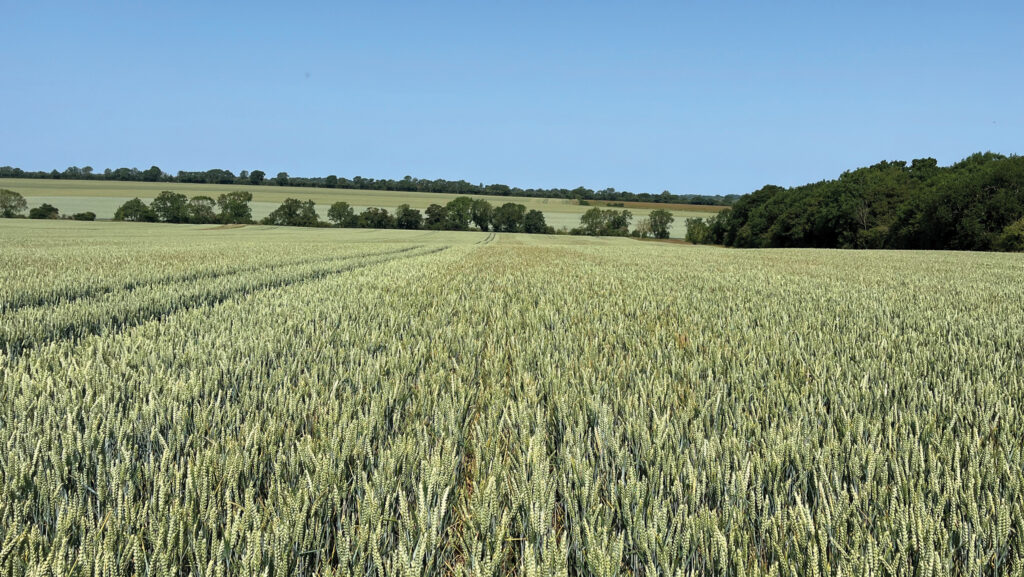Why wheat variety blends will prove their worth in 2026
 A wheat blend showing benefits against blackgrass © Hutchinsons
A wheat blend showing benefits against blackgrass © Hutchinsons Next year could be the season where wheat variety blends prove their worth, bringing benefits with blackgrass control and for managing the new race of yellow rust.
Speaking to farmers, Hutchinsons technical manager Dick Neale highlighted two of the key challenges farmers face this season – blackgrass and a new race of yellow rust.
See also: How a farmer is planning weed control without flufenacet
With blackgrass, the lack of moisture has impaired residual herbicide performance, especially in the east of the UK where conditions remain very dry.
Consequently, Mr Neale reports that plenty of blackgrass is being seen.
Herbicides are only part of the integrated approach, with delayed drilling, stale seed-beds and competitive varieties also having a role.
New work at the Hutchinsons Cambourne blackgrass site in Cambridgeshire is showing the potential value of a four-way variety blend on blackgrass control.
The blend contained Gleam, Champion, Dawsum and Insitor.
Mr Neale believes it is down to increased crop competition below ground.
“The additional roots is quite staggering with a blend compared with a single variety.”
Yellow rust
Another key challenge is the new race of yellow rust, which has overcome the Yr15 resistance gene.
The strain is so aggressive that Mr Neale believes it should be categorised as a new disease.
This has resulted in some key varieties such as Champion seeing a dramatic reduction in their RL yellow rust resistance score from 8.4 to 3.5.
Some other varieties that don’t rely as much on the gene have been less affected.
Mr Neale highlighted that there are already reports of Champion in Scotland showing yellow rust.
“This is a part of the UK that doesn’t tend to see this disease.
“Many farmers had little choice on what to put in the ground as that was what was being grown for seed. So there are loads in the ground that are susceptible to it.”
Mr Neale says this is where a blend is beneficial, as it helps reduce the risk. He explains that with the four-way blend containing Champion, “only 25% is that variety and so you are not at risk of losing the whole crop.”
The top three Recommended wheats in Denmark are blends and, looking at total seed sales, they now account for 50% of the market.
The susceptible plants are surrounded by resistant plants helping to suppress the disease, so any losses are in fact lower than the 25%. This risk reduction could prove beneficial this season.
Mr Neale explains that blends are not going to boost yields – indeed, he says that if a blend contains the highest-yielding variety in your area, there is a chance that that single variety would outperform the blend, but that in 75% of cases the blend would beat any single variety.
He pointed to Denmark where farmers are under pressure to minimise fungicide use, with strict limits on their use. This encourages the use of integrated pest management to suppress disease.
The top three Recommended wheats in Denmark are blends and, looking at total seed sales, they now account for 50% of the market.
Tips
For farmers considering a blend, Mr Neale says a good place to start is identifying what varieties have grown well on their farm.
“Also consider what markets you are growing for, if you are growing Group 3 biscuit wheats for a premium, then only pick Group 3s.”
One potential downside is whether millers will accept Group 1 blends, although Mr Neale believes this is still possible if it hits quality specs.
Farmers also don’t need to worry too much about matching types, he suggests aiming for varieties with up to a week difference in maturity score.
“You find that they will harvest together.”
Nature brings them together with plants signals roots – they tend to hit growth stages pretty much at the same time, he says.

